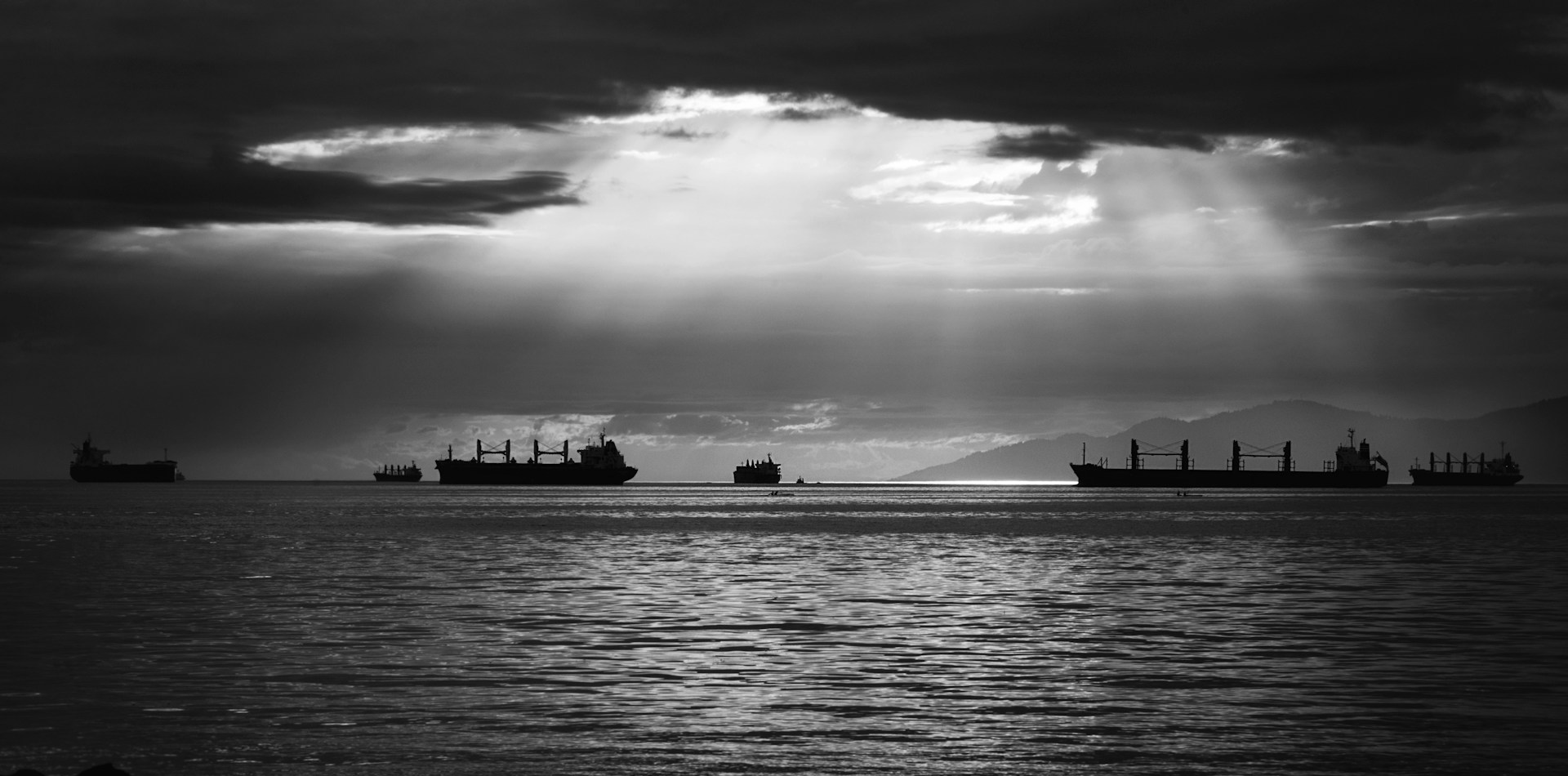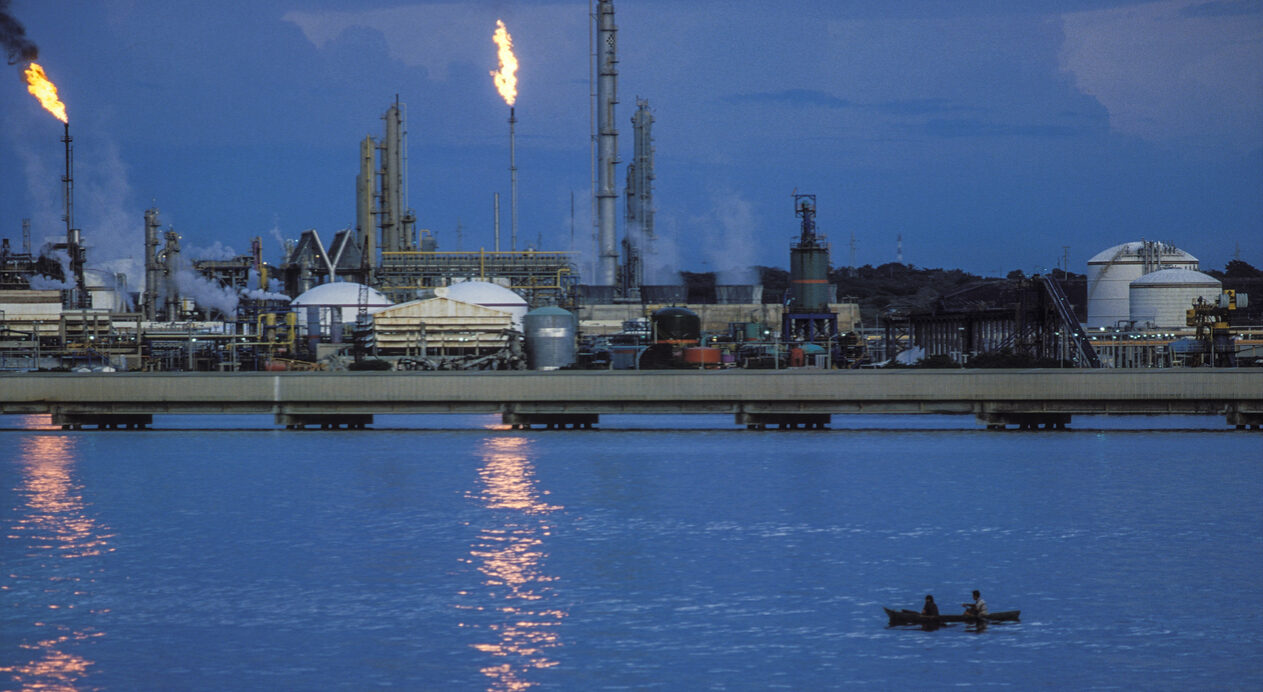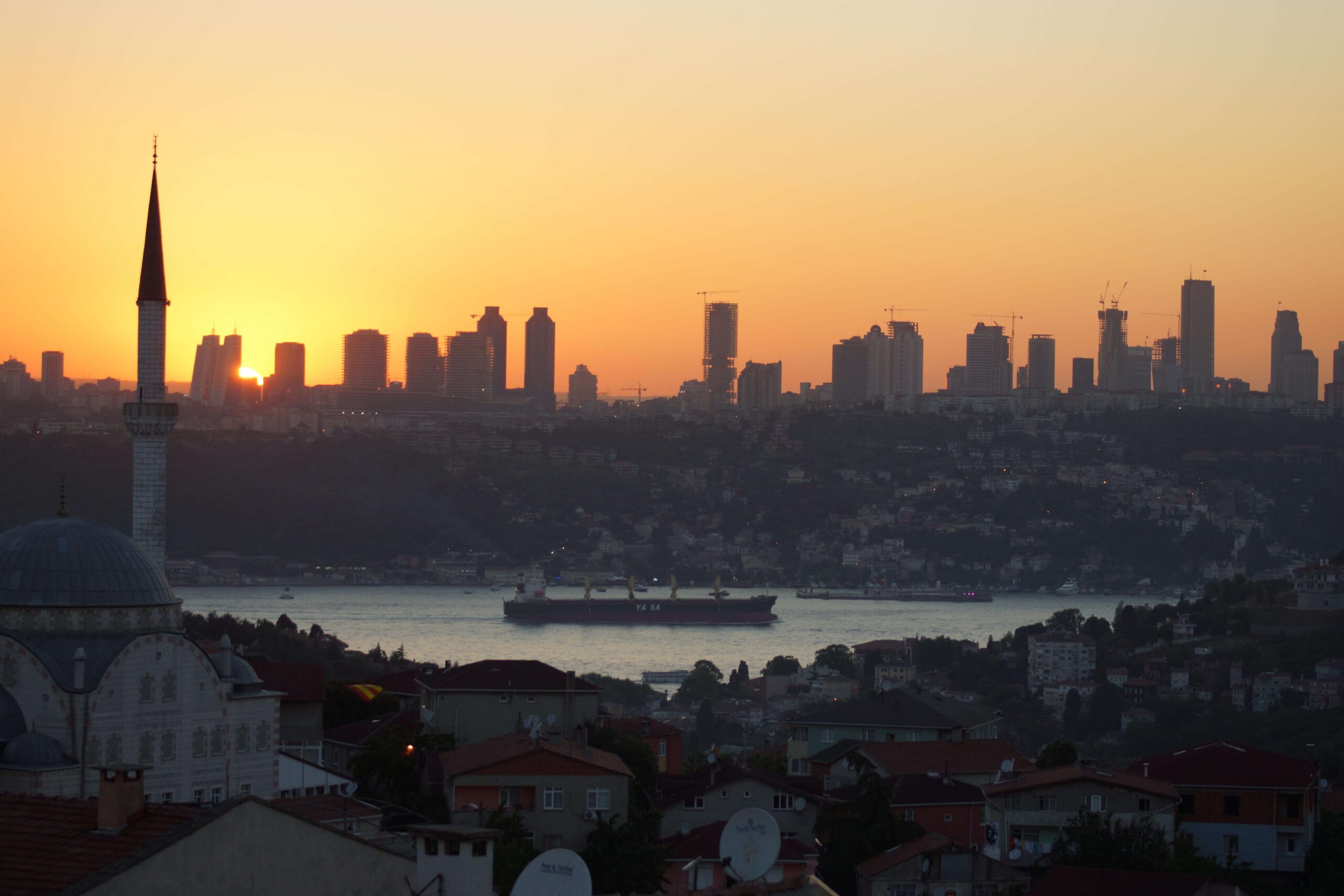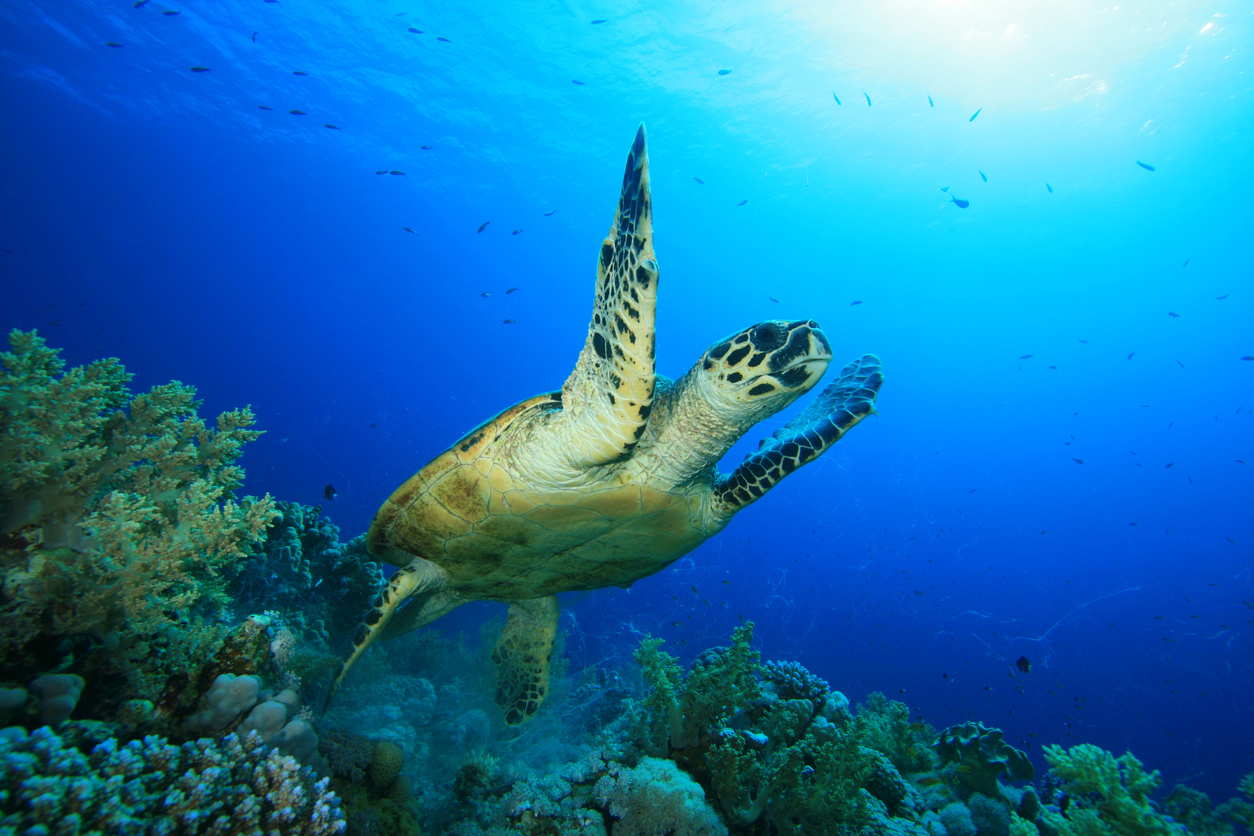Moscow’s creaky and unregulated tankers are ferrying illicit oil all over the world—with alarming consequences for the world’s oceans
By SourceMaterial, Victor Jack, Karl Mathiesen, Louise Guillot and Hanne Cokelaere
On a chilly spring morning in March, British coast guards spotted something unusual off the Scottish shoreline: a dark stain, stretching 23 kilometres into the North Atlantic Ocean.
According to an internal analysis prepared by the coastguard’s satellite services and seen by Politico, the likely source of that stain was Innova, a tanker roughly the size of the Eiffel Tower that at the time was hauling 1 million barrels of sanctioned oil from Russia on its way to a refinery in India.
Yet the coast guard did little to investigate further, and the tanker—free from any repercussions—continues to trade oil today, helping fill the Kremlin’s war chest more than two years into its full-scale invasion of Ukraine.
The Innova is just one of hundreds in the world’s so-called shadow fleet, a collection of often ageing, poorly maintained ships sailing in defiance of Western sanctions—and spreading environmental harm without consequences.
A joint investigation by SourceMaterial and Politico found at least nine instances of covert shadow fleet vessels leaving spills in the world’s waters since 2021, using satellite images from the SkyTruth NGO paired with shipping data from market analysis firm Lloyd’s List and commodities platform Kpler.
The incidents reveal “significant danger” to the marine environment, said Sweden’s foreign minister, Maria Malmer Stenergard.
“It’s a ticking time bomb.”
It’s a problem that’s only grown worse following Russian President Vladimir Putin’s full-scale invasion of Ukraine. With Moscow under Western sanctions, an increasing number of tankers are ferrying illicit goods across the globe. Not only are these vessels creaky and largely unregulated; they’re often uninsured, meaning that in case of a leak or more serious spill, a government would struggle to hold them accountable.
SourceMaterial identified discharges everywhere from Thailand to Vietnam to Italy and Mexico, all linked to the shadow fleet. Tankers involved passed through busy shipping corridors like the Red Sea and the Panama Canal, meaning any serious accident could rupture international trade routes.
Experts believe it’s only a matter of time before one of these ships suffers a catastrophe with major environmental—and economic—devastation.
“The oil spills and risk of slicks are horrendous,” said Isaac Levi, Europe-Russia lead and a shadow fleet expert at the Centre for Research on Energy and Clean Air (CREA), a think tank. “Beyond the environmental damage, some of which will be irreversible, it’s a huge impact to coastal states that have to bear the cost of cleaning this up,” Levi said. “It’s a ticking time bomb.”
Rising dangers
The situation poses a global dilemma for democratic countries seeking to squeeze Moscow’s revenues while avoiding disastrous ramifications.
When the West first imposed sanctions on Russian oil in 2022, they aimed to throttle a critical lifeline for the Kremlin, which relies on oil and gas exports for almost half its budget.
But almost two years later, the measures—which include a blanket import ban to the EU and an oil price cap that G7 allies imposed with other partners—have largely come up short.
Instead, Moscow has found creative workarounds. It has relabeled its crude oil to mask its origins, and it organised an ever-growing fleet of over 600 vessels, with ownership often obscured by shell companies, using it to dodge the $60-per-barrel price cap set by the G7—tactics that Iran and Venezuela use for similar purposes.
So far, the price cap “has proved to be a very leaky instrument,” said Michelle Wiese Bockmann, a shipping analyst and shadow fleet expert at Lloyd’s List, adding that in July, 92 per cent of Moscow’s seaborne crude was transported on vessels outside Western control.
The dark fleet has tripled in size since 2022. Meanwhile, the cash has kept flowing into Russia’s war coffers. According to data analysed by CREA, the think tank, as of September this year Moscow’s shadow fleet had transported €80 billion worth of crude since the G7 imposed the price cap two years ago.
At the same time, the fleet is “presenting a lot of safety and environmental concerns”, Bockmann said.
These tankers, which Lloyd’s List defines as having no known insurance, obscure ownership and built 15 years ago or more, are classified as “high-risk” by engineers. That leaves them more vulnerable to technical problems that could affect their seaworthiness.
With four-fifths of these vessels lacking credible insurance, according to data from Lloyd’s List, that also means they often escape international oversight and regulation. That risk only increases where tankers turn off their transponders or transmit false locations, using so-called spoofing methods.
Where spills do happen, cleanups can cost coastal countries and their taxpayers millions, Bockmann said, since the vessels’ owners cannot be tracked. Ships could also block trade choke-points like the Suez Canal if captains lose control of their vessel, she added.
The spills also pose “a very serious problem” for local wildlife, said Stepan Boitsov, a marine pollution specialist at the Norwegian Institute of Marine Research. They can harm marine life, render consumer products like shellfish toxic and prevent fish reproduction. Cleaning up presents its own problems: The chemicals involved can spread further contamination, he added.
Then there’s the collision risk. In July, a Russian shadow fleet vessel hit another tanker in Malaysian waters, causing both to catch fire.
The risk caused by the shadow fleet is global: An analysis of shadow fleet routes shows the vessels have travelled down the west coast of the US, repeatedly passed through the Mediterranean, split the English Channel and hugged China’s shoreline. And that’s just when their transponders are operating.
The problem is particularly acute in Europe, where “the dark fleet is an accident waiting to happen”, Wiese Bockmann said, given that many unregulated ships pass through EU waters after leaving Russia’s Baltic and Siberian ports.
Leaving their mark
Satellite images show small-scale accidents are already occurring around the world, largely unnoticed by authorities.
The Innova is a case in point. On March 12, six days after departing from the port of Murmansk in northwest Russia, satellites captured images of a long black strip on the ocean surface. Transponder signals from the ship put it at the scene when the slick appeared.
Satellite imagery cannot determine whether the slick was definitely oil. According to Alexandros Glykas, a marine engineer and chief executive of the Dynamarine shipping services firm, the ship’s dimensions and the fact the stain was visible from space mean it was likely a discharge of slops, an oil-and-water mixture stored in a ship’s cargo tanks after they are washed.
Intentional overboard discharge of waste oil slops is usually illegal under Marpol, an international treaty to curb shipping pollution, according to Sean Pribyl, a maritime lawyer at Holland & Knight. Signatories include many European countries, as well as Russia and Vietnam, the country where the Innova was registered at the time and whose laws it was accountable to—its so-called flag state.
Yet the UK did not send a vessel to investigate further. A Maritime and Coastguard Agency spokesperson told SourceMaterial and Politico it did not find “sufficient evidence of a violation”—even though UK coastguards are required to investigate visible slicks when reasonably able to do so.
“Action will always be considered where there is evidence of the potential for environmental or social harm, which was not the case here,” the spokesperson said.
Evidence of a possible violation usually requires the vessel’s flag state to launch an investigation, which could result in the revocation of documents needed for a ship to trade.
The foreign ministries of Vietnam and Sierra Leone, Innova’s flag states at the time of the spill and after it occurred, did not reply to detailed questions from SourceMaterial and Politico. Innova’s owner at the time, Sao Viet Petrol Transportation, also did not respond to several requests for comment.
Innova’s trip eventually ended at the Vadinar refinery in India, which last year alone received 82 million barrels of oil from Russia worth an estimated €5 billion. Then in July, Innova changed its name, managers and owner.
The Innova is far from the only ship to have left a trail of pollution in its wake.
On 18 February satellites spotted a 47 kilometre slick off the Italian coast matching the coordinates of another shadow fleet tanker, the Aruna Gulcay.
That tanker, flagged in the Marshall Islands, was carrying ballast—seawater carried to keep the ship stable—from the port of Ravenna in Italy to Novorossiysk in southern Russia. It’s unlikely the discharge was ballast, said Glykas, the engineer, since seawater would not be visible from space, implying another Marpol violation.
Similarly, the Italian coast guard did not carry out an inspection of the ship. Instead, an Italian maritime agency spokesperson said it had contacted nearby ships for information on the spill. The Marshall Islands’ government did not respond to a request for comment, and the ship soon changed its name and manager.
Analysts at SkyTruth said the nine slicks they could clearly link to shadow fleet vessels are likely an extremely small subset of the real problem. That’s primarily because the analysis relied on the vessels having their transponders on at the time of the slick, a requirement that ships in the business of evading sanctions don’t always observe.
“I’m absolutely convinced that what you have noticed is the tip of the iceberg,” said Bockmann, the shipping analyst. The ships are designed to transport sanctioned oil as cheaply as possible with “absolutely no regard for conventional marine standards,” she said.
High-risk shipping
The evidence of spills is leading to fresh calls for government action. But options for stopping the shadow fleet are limited.
The findings are “obviously outrageous,” said one EU diplomat, granted anonymity to speak candidly. Coastal European countries like Italy and the UK “have the responsibility to take extra efforts to investigate ships when they are linked to Russia,” the diplomat said.
The Innova and Aruna Gulcay in particular, the EU diplomat said, should now be “strong candidates” for Brussels’ next sanctions package against Russia given their apparent breaches of international maritime conventions. In all, diplomats from four EU countries said the two ships should face sanctions if they breached Marpol as the findings suggest.
“If the vessels referred to are involved in irregular or high-risk shipping practices or contributing to Russia’s war efforts, they run a high risk of being added to the sanctions regime,” Swedish Foreign Minister Stenergard told Politico.
The EU has sought to tighten the screws on Moscow’s shadow fleet by more closely monitoring the sale of old tankers to foreign countries before they get into Russian hands. The bloc also banned 27 suspect tankers from accessing EU ports or services—a tactic the US also uses.
UK authorities have also imposed restrictions on individual tankers. Last month the UK added 10 more shadow fleet vessels to its sanctions list on top of 15 already penalised. A UK foreign ministry spokesperson did not respond to questions about the Innova, but said Britain was “going after vessels” enabling sanctions circumvention.
Italy’s foreign ministry told Politico it “stands ready” to sanction vessels according to EU rules, but added it had “not received any information in this regard” for the Aruna Gulcay.
A spokesperson for the European Commission said the EU’s executive arm was “constantly” exploring “possible future listings of vessels, including from the dark fleet”. All 27 EU countries must agree to adopt new sanctions.
Sanctioning individual tankers has proven to be a “pretty effective” move, said Levi, the CREA expert. Those blacklisted by the US, for example, saw their ability to trade oil drop 90 percent three months after being penalised.
CREA would “very much encourage” the West to significantly expand the number of vessels on those sanctions lists, which deter service providers like engineers and traders from cooperating with the tankers, he said.
The EU and UK should also consider banning tanker sales to countries facilitating trade to Russia, Levi said, and automatically sanction vessels sailing through EU waters without known insurance.
The EU’s more hawkish countries on Russia also agree the bloc must step up its efforts, given the stakes involved.
“We are happy that we created this sanction and we listed these ships—but also we are clear that we need to continue,” said Estonia’s Foreign Minister Margus Tsahkna.
The next oil spill could be larger, he warned:
“It will be a catastrophe for us.”
Headline picture: Tim Mossholder, Unsplash // Graphics: Politico





